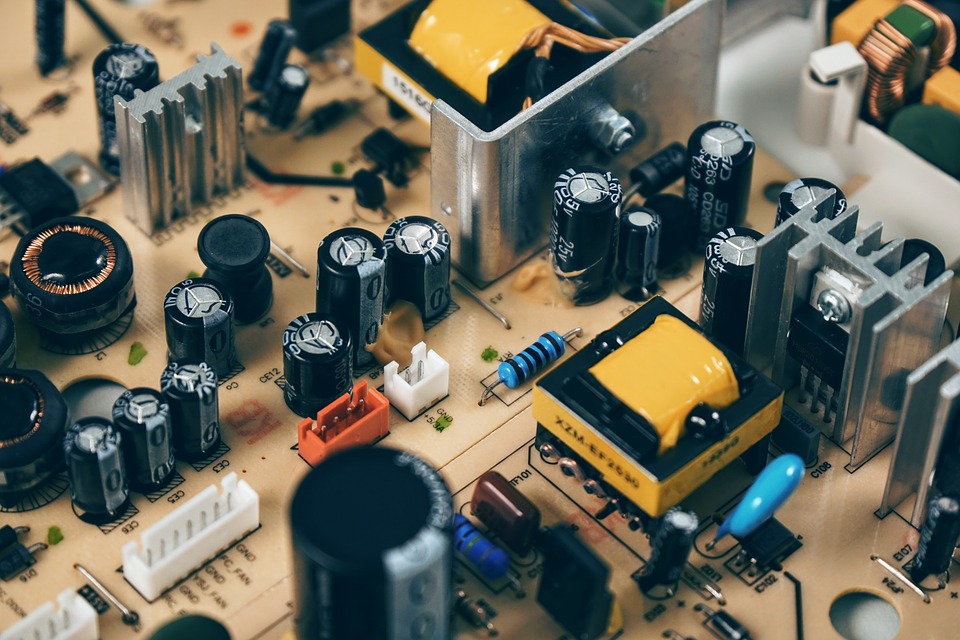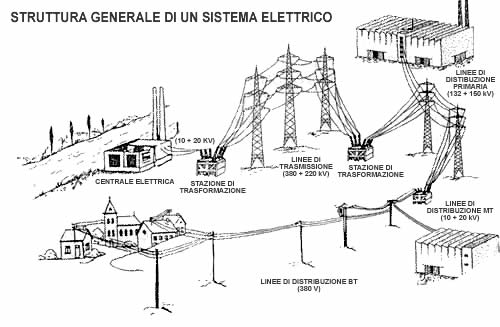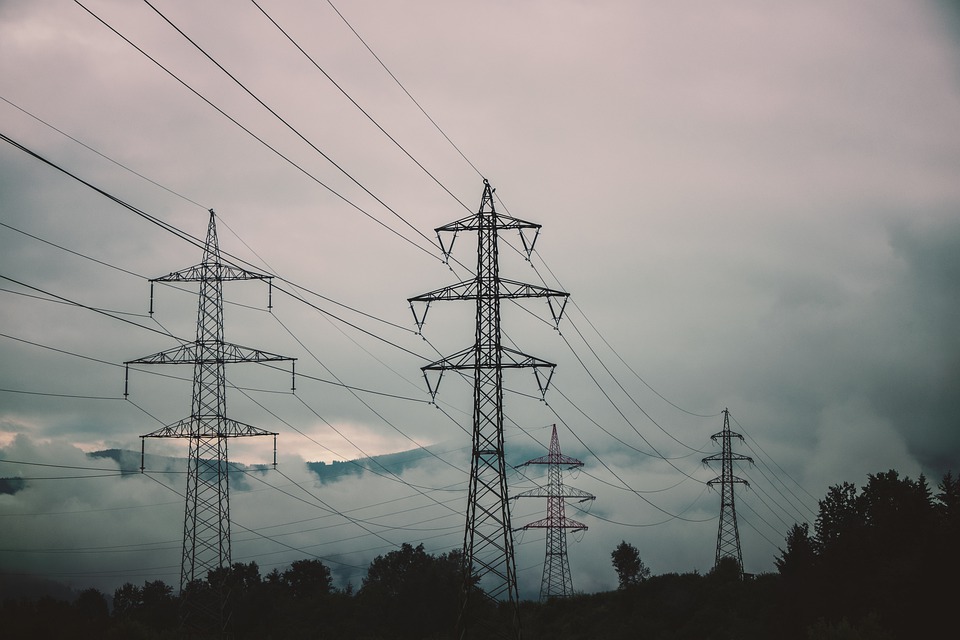 Italiano-
English-
日本語
Italiano-
English-
日本語

Welcome to my web page dedicated to
electronics and electrical engineering.
On this page I will try to define in simple
words the immense world behind at the electrical engineering and
electronics, it is not an easy task but I will try, using and making
available my long experience in the field.
Of course it is impossible to condense such a
vast subject in this small text, but if you intend to deepen or need
professional advice, you can contact me via the
Contact page.
At the end of this document you will find
links to the in-depth pages dedicated to active
and passive electronic components.
Electrical
engineering
We start from the raw material, that is, from
what we need to make everything work, we are talking about
electric current.
The classic definition is "a flow of electrons circulating in a
conductor subjected to a potential difference or electrical imbalance",
the unit of measurement is the Ampere,
abbreviated with a capital
A, in honor of the French physicist
Andrè Marie Ampère who studied and defined it.
In defining the electric current we have introduced another primary
parameter, the difference in electrical potential
D.D.P.
or electric voltage, or electric motor force F.E.M.
that is, the force that creates the electrical imbalance in the atoms of
a generic conductor, and therefore the circulation of electrons, which
in an attempt to restore equilibrium create the aforementioned flow, it
is measured in Volta, abbreviated as
Volt and indicated with a capital
V, all this in honor of the illustrious Italian
scientist Alessandro Volta,
who carried out many studies and created the first voltage generator in
the world (the Volta electric battery), there are two types of
electrical voltage, the continuous one which is constant (it does not
vary over time), and the alternating one (it varies in value over time
and can have both a positive and a negative sign).
Defined as the main architects of the entire electric world, a third
force remains to be defined, we are talking about
electrical resistivity, that is, of
the force that hinders the movement of electrons in a generic conductor
(link between electrons and the atom's nucleus), it is measured in
Ohm, in honor of the German physicist
Georg Ohm who studied and defined it, it is
indicated with the omega Ω symbol.
The electric power is instead the work
done by the current and the voltage to obtain a given purpose and is
measured in
W.
From what has been said, it is understood that applying an electrical
voltage (V) to a generic conductor causes a flow of
electrons (A), however, hindered by the intrinsic
resistivity of the conductor itself (Ω).
This can be said when
working in direct currents (constant value over time and of non-variable
polarity), in alternating current
(variable value and polarity that changes between positive and negative)
various other non-negligible parameters intervene which must necessarily
be taken into account, they are the frequency f (how
many times a given current passes through zero in the unit of time (1
second), the period S (the inverse of the frequency)
the capacitive reactance Xc (capacitor)),
the inductive reactance Xl (inductor
) and the phase shift φ (fi), these quantities combined
with the
resistance create another equivalent quantity (i.e. born from the
combination of all the parameters) called impedance and
indicated with the capital Z symbol, besides the
alternating current (used in sinusoidal form ) must be represented in
vector form, and therefore being a mixed quantity it has a real part and
an imaginary part, the imaginary part is in the formulas s eparata from
the imaginary part by the letter Ι (iota).
There are materials that oppose the circulation of the current more than
others, ie they have a higher specific resistivity, they are the
insulators (rubber,
glass, pvc, dry wood, plastic, distilled water), otherwise the
conductive materials have a very specific resistivity
low and hardly oppose the passage of electric current (copper, gold,
silver, aluminum, brass, generally metallic materials).
There are also particular materials called
semiconductors (germanium and
silicon) which have a specific neutral resistivity, they use a procedure
called "doping" to form the basis for obtaining the transistors and
integrated circuits that we will see later.
But how is electricity produced? The simplest generator is the
electric battery, which produces a
continuous type voltage and is formed by disks of different conductive
material superimposed and immersed in an electrolyte. Currently,
rechargeable batteries can also be supplied to correctly call "electric
accumulators" which, after a recharge procedure, return at a
later date the accumulated energy.
For small capacities, nickel-cadmium accumulators are used, or the
perfected nickel-manganese type, for large capacities lead-acid
accumulators are used, each having positive and negative aspects.
The electric energy that arrives in our homes is of
alternating type, and is produced from
renewable sources, that is that they are regenerated in a short time (photovoltaic
panels, biomass, hydroelectric, wind power plants) or from non-renewable
sources (oil, coal, methane, nuclear), however almost all of it is
obtained by converting an energy that can be solar, nuclear or else into
electricity, or from mechanical energy, through a machine called an
alternator, which
works on the principle of electromagnetic induction.
The energy is then distributed as shown in the figure below.

To conclude, I quote the formulas to calculate at least the main
parameters exposed before, ie voltage, current and resistance, to do
this we are helped by the "Ohm's law"
which allows to calculate one of the parameters knowing the other two.
by convention the voltage is indicated with V, the current with I and
the resistance with R, having said that we pass to the formulas.
Voltage V = R * I Current I = V / R
Resistance R = V / I
The value of the electric power is instead given by the multiplication
between the voltage and the current, in substance, W = V * I
By
clicking on this text you can download an XLS file that I created
specifically with which you can calculate all the parameters required by
the "Ohm law".


Wind farm with wind generators.
Solar farm with photovoltaic panels


220 KV power line
Transformer and distribution substation
Electronics
After having clarified what
electric current is, how it is produced and distributed up to our homes
and how to calculate its main parameters, we can now devote ourselves to
the more refined aspect, that is to the actual electronics, but what is
the electronics?
It can be defined simply as the science that uses
electrical voltages and currents (low power electrical signals)
to create and operate instruments, which use "signals"
to condition and process other physical quantities.
The aforementioned electronic instruments are
formed by "electronic circuits" in turn formed by
passive and active
components, which are assembled and connected to each other in order to
achieve the purpose set in the design phase.
Electronics is further divided into two major sectors, Analog Electronics and Digital Electronics.
Analogue electronics are those where electronic circuits process electrical signals that can have any voltage value from zero to infinity at any time, for example analog amplifier circuits with operating class A-AB-C in the case of some radio frequency circuits and some low frequency.
Instead digital electronics can be defined as the one where logic signals are processed, that is, whose values can be only two, 0 or off, or 1 or on (true or false, Boolean logic), all of which fall into this now dominant sector. equipment processing logic signals, such as personal computers, smartphones, heat engine control units, etc. However, analog signals can also be processed by converting them into digital by means of special electronic circuits (A / D converters).
The main components used in electronics are the active and the passive ones, the passive components are those that use energy but do not carry out signal amplification or production or processing, they serve as a contour to the active ones to polarize them and make them work, on the contrary the active components are those which can produce, amplify or process signals.
The active and passive components are dealt with on separate pages, you will find the links to access them at the end of this page.
In both electrical engineering
and electronics, in order to understand the operation of a given
circuit, the operating scheme
(electrical scheme)
is necessary, which can be both electrical and practical. The electrical
or theoretical one uses standardized symbols to represent the components
used and serves to facilitate understanding of the operation, while the
practical one represents the construction diagram of the circuit.
At this link you will find some
symbols used in the wiring diagrams.
In the pages you have
available by clicking on the links at the end of this document, you can
find a broader discussion of the active and passive components most used
in electronics.
Of course it is impossible to condense all these concepts in a small
space, mine wants to be only a good guide for those who look out on this
fantastic world, it is possible
however to deepen or request a professional consultation by contacting
me, for this go to the
contact page.
These pages will be enriched in the future with projects concerning the
world of moving electrons ready to be built and which will serve to
better focus on what has been said.
Thank you for visiting my website and
following my guide, come back to visit it.
Informatics, Software and O.S., Computer network
Electronics, Active components, passive components
Radiowave
Seismo
Contacts
Who I am
Sitemap
Audio
Terms of use
Armando Caligiuri, Electronic senior expert, electronic and I.T. maintainer, I.T. consultant
Web master Armando Caligiuri
(C) 2024 V3.2